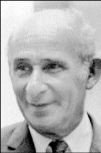
As the indictment alleges, the accused deliberately and maliciously plotted and engineered the commission of acts of violence and destruction throughout the country.
The planned purpose thereof was to bring about in the Republic of South Africa chaos, disorder and turmoil, which would be aggravated, according to their plan, by the operation of thousands of trained guerrilla warfare units deployed throughout the country at various vantage points. These would be joined in the various areas by local inhabitants as well as specially selected men posted to such areas. Their combined operations were planned to lead to confusion, violent insurrection and rebellion, followed, at the appropriate juncture, by an armed invasion of the country by military units of foreign powers.
In the midst of the resulting chaos, turmoil and disorder, it was planned by the accused to set up a provisional revolutionary government to take over the administration and control of this country...
In the main, the accused are charged with two counts of sabotage.
Firstly, the State alleges that the accused, together with the other persons and associations named in the indictment, actually committed wrongful and willful acts, namely: The recruitment of persons, for instruction and training, both within and outside the Republic of South Africa, in (a) the preparation, manufacture and use of explosives— for the purpose of committing acts of violence and destruction in the aforesaid Republic, and (b) the art of warfare, including guerrilla warfare, and military training generally— for the purpose of causing a violent revolution in the aforesaid Republic. The State further alleges that the accused are guilty of 153 acts of violence and destruction (sabotage) as particularized in the annexure attached to the indictment....
The evidence on the first count, will be briefly as follows: By the latter half of 1961 the African National Congress had decided to embark upon a policy of violence and destruction a policy of sabotage in order to achieve their political aims and objectives. For this purpose they formed the Umkhonto We Sizwe (‘the Spear of the Nation’), which was to be the military wing of the ANC. This organization was recruited from followers who were prepared, whatever the odds, to die if necessary in the execution of the acts of violence and destruction.
The Umkhonto We Sizwe placed itself under the political guidance of the ‘National Liberation Movement...These organizations, having been banned, decided to go underground, for which purpose it was absolutely necessary for them to obtain suitable secluded premises from which to direct underground activities.
Michael Harmel, a Communist, using the fictitious name of Jacobson, approached an estate agent for just such premises, adding that he needed them for his brother-in-law, who was a sick person and needed peace and quiet. Eventually, after rejecting a number of houses because they were too near neighbours, suitably secluded premises were found in July, 1961, at Rivonia: a large house with suitable outbuildings, standing in spacious grounds of more than twenty-eight acres.
A purchase price of R25,000 was agreed upon; RlO,000 to be paid forthwith, and the balance in three equal installments of R5,000 each. The brother-in-law in question was Vivian Ezra, who was neither sick nor in need of peace and quiet. Moreover, he was not in a financial position to buy any house, let alone one for R25,000....
The accused deliberately and maliciously plotted and engineered the commission of acts of violence and destruction throughout the country, directed against the offices and homes of municipal officials as well as against all lines and manner of communications. The planned purpose thereof was to bring about in the Republic of South Africa chaos, disorder, and turmoil which would be aggravated, according to their plan, by the operation of thousands of trained guerilla warfare units deployed throughout the country at various vantage points. These would be joined in various areas by local inhabitants as well as specially selected men posted to such areas. Their combined operations were planned to lead to confusion, violent insurrection and rebellion, followed at the appropriate juncture by armed invasion of the country by military units of foreign powers. In the midst of the resulting chaos, turmoil and disorder it was planned by the accused to set up a provisional revolutionary government to take over the administration and control of this country....
The extent to which the National High Command plotted their policy of sabotage...can be gauged from their ‘production requirements’— a program which they planned to complete in six months. These requirements, as the documents prove, included 144 tons of ammonium nitrate, 21.6 tons of aluminium powder, and 15 tons of black powder. Without taking into account the explosives and detonators which the members of the sabotage squads throughout the country were enjoined by their leaders to steal from explosives magazines and various mines, the experts will say that the aforementioned ‘production requirements’ constituted sufficient to blow up a town as extensive as Johannesburg....
In conclusion it remains only to be said that the documents and witnesses will reveal to the court that the accused together with the other persons and associations named in the indictment had so planned their campaign that the present year, 1963, was to be the year of their liberation from the so-called yoke of the white man's domination.
